Best Grain-Free Dog Food Choices for Akitas With Allergies

Caring for an Akita with allergies can feel overwhelming, especially when choosing the proper diet. Many Akitas suffer from sensitivities to grains like wheat or corn, which can trigger discomfort or health issues. Switching to grain-free dog food might help minimize allergic reactions and promote better overall well-being.
Plus, a grain-free diet often provides essential nutrients, making it a practical option for your dog’s health. If you’re unsure about suitable choices, check out this guide on the best dog food for Akitas to explore tailored options.
Table of Contents
Understanding Allergies in Akitas
Like many breeds, Akitas can be prone to allergies that impact their overall well-being. Whether it’s triggered by food or environmental factors, identifying and managing these allergies can significantly improve your furry friend’s quality of life. Let’s take a closer look at the common types of allergies and how to spot them.
Types of Allergies Common in Akitas
Akitas can develop allergies that fall into two main categories: food and environmental. Understanding these differences can help you determine what’s troubling your dog.
Food Allergies: Akitas may react to ingredients in their food, such as grains, chicken, or soy. Sometimes, even kibble storage mites
can cause an allergic reaction. Symptoms usually manifest as skin irritation, chronic ear infections, or digestive upset. Transitioning to a grain-free orelimination diet can help pinpoint the offending ingredient. For information on suitable grain-free options, explore our guide on dog food for Akitas.
Environmental Allergies: Common allergens in a dog’s surroundings include pollen, grass, mold, and dust mites. Seasonal changes often exacerbate reactions to these irritants. Environmental allergies may lead to symptoms like sneezing, watery eyes, or itchy skin. If you suspect environmental factors, consulting a vet for specialized tests can shed more light.
For more insights on allergies in Akitas, check out this informative Reddit discussion on common Akita allergies.
Symptoms of Allergies in Akitas
Noticing the signs of allergies early can make a big difference in your Akita’s comfort and health. Allergies often show up in these ways:
- Itching and Scratching: Constant itching or licking, especially around the paws, ears, or belly, is a red flag.
- Skin Irritations: Look for redness, rash-like bumps, or hair loss. Hot spots, which are irritated, inflamed areas on the skin, are another sign.
- Digestive Issues: Vomiting, diarrhea, or gassiness can indicate a food allergy.
- Chronic Ear Infections: If your Akita seems prone to ear infections, it might be tied to an allergy.
- Respiratory Problems: Frequent sneezing or wheezing can signal environmental allergies.
Keep in mind that different allergens may lead to overlapping symptoms. Paying attention to these clues can guide you toward the root cause. For a deeper understanding of dog allergy symptoms and treatments, visit this AKC article on dog allergies.
By observing your Akita closely and consulting a trusted veterinarian, you can eliminate allergens from your dog’s diet or surroundings and find practical solutions to keep them happy and healthy.
Benefits of Grain-Free Dog Food
When caring for an Akita with allergies, it’s crucial to consider their dietary needs. Grain-free dog food can provide numerous advantages, especially for allergy-prone pups. Whether it’s improving digestion or reducing allergic flare-ups, this alternative diet is worth exploring.
Digestive Health Improvement
Akitas with sensitive stomachs or food intolerances often benefit from grain-free dog food. Grains like wheat, corn, and soy can be challenging for some dogs to digest, leading to bloating, gas, or loose stools. Removing grains from their diet can help your Akita process meals more effectively, resulting in better nutrient absorption.
A diet free of grains often incorporates ingredients like sweet potatoes, lentils, or chickpeas, which are gentle on the stomach and promote optimal gut health. These nutrient-dense alternatives are packed with fiber and essential vitamins your dog needs for a healthy digestive system.
For more information on grain-free options that suit different breeds, refer to this guide on the best dog food for Great Danes. Even though it’s tailored for Great Danes, it offers insights into grain-free benefits that apply universally.
Reduction in Allergy Symptoms
Grains might be a culprit worth avoiding if your Akita is prone to allergies. You reduce the risk of triggering common allergenic reactions by eliminating grains from your diet. Symptoms like itchy skin, rashes, and excessive licking could diminish significantly.
Grain-free recipes often rely on single protein sources and carbohydrate alternatives, minimizing exposure to allergens. This approach allows pet parents to pinpoint better what works for their dog. Additionally, grain-free diets can help resolve chronic ear infections or hot spots, two conditions frequently linked to food allergies.
To understand the broader benefits of grain-free diets, you might find this article on the benefits of grain-free dog food helpful.
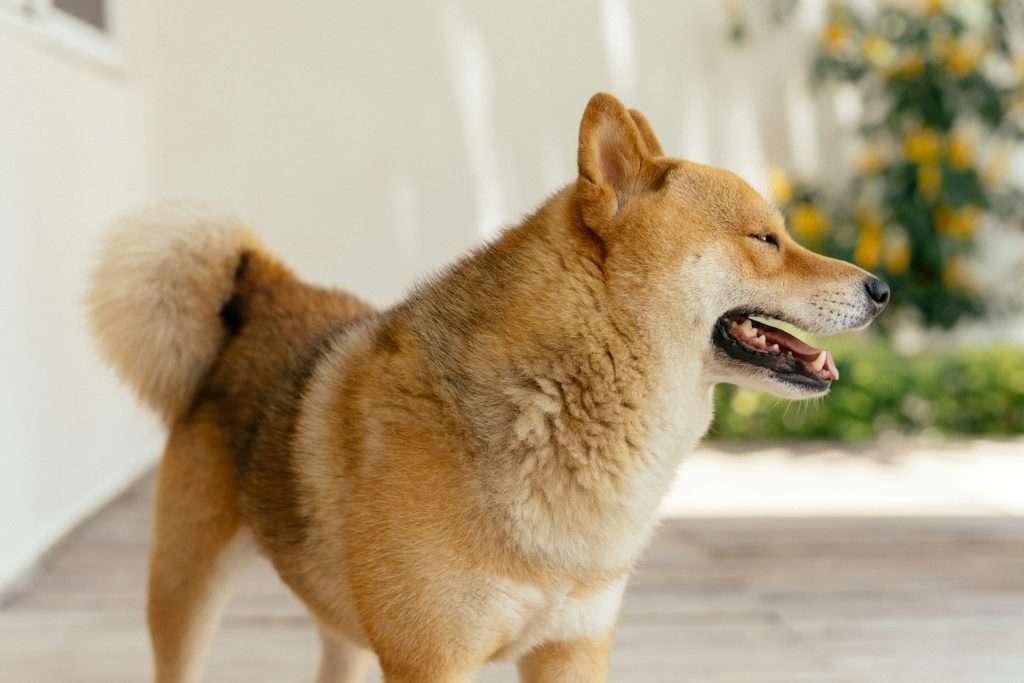
Photo by Cottonbro Studio
Switching to a grain-free diet might be the key to improving your Akita’s overall health and happiness.
Top Grain-Free Dog Food Brands for Akitas
Finding the right grain-free dog food for your Akita can make a difference, especially if they’re dealing with allergies. With so many options on the market, knowing which brands are worth considering can save time and help your furry friend thrive.
Orijen Six Fish Grain-Free Dry Dog Food

Photo by Zen Chung
Packed with premium ingredients, Orijen Six Fish is a fantastic choice for Akitas with allergies. This food features six nutrient-rich, wild-caught fish, making it a high-protein option that doesn’t rely on grains. Key ingredients include whole mackerel, herring, and monkfish, providing omega fatty acids that support a healthy coat and skin. Its grain-free formula is designed to limit common allergens, making it ideal for dogs prone to food sensitivities. For more information, check this discussion on Akita food preferences.
Taste of the Wild Pacific Stream
Taste of the Wild Pacific Stream is another excellent option, especially for picky eaters. This formula uses salmon as the primary protein source and sweet potatoes for easily digestible energy. It’s loaded with antioxidants, thanks to actual fruits and vegetables. Additionally, it includes probiotics to support gut health, which is crucial for Akitas, which are prone to digestive issues. With its commitment to grain-free goodness, this brand helps your pup stay allergy-free while enjoying a balanced diet.
Canidae Pure Limited Ingredient Premium Dry Dog Food
Canidae Pure focuses on simplicity, making it a top pick for Akitas with food sensitivities. This grain-free formula uses eight key ingredients, such as salmon, peas, and lentils, to deliver essential nutrients without unnecessary fillers. Its limited-ingredient recipe makes identifying and eliminating allergens from your dog’s diet easier. If your Akita struggles with skin or stomach issues, Canidae Pure may be the solution you’ve been waiting for. For a list of comparable limited-ingredient diets, visit this guide on the best food for Akitas.
Wellness Core Grain-Free
Wellness Core stands out for its high-protein and energy-boosting formula, perfect for active Akitas. With ingredients like deboned turkey, chicken meal, and peas, it offers a power-packed punch of nutrients. Additionally, glucosamine and chondroitin support joint health, which is essential for large breeds like Akitas. Wellness Core ensures your dog’s diet is both allergen-friendly and nutritionally balanced.
Blue Buffalo Wilderness Grain-Free
Blue Buffalo Wilderness Grain-Free combines real meat with antioxidant-rich LifeSource Bits to provide wholesome nutrition for allergic Akitas. Its recipe includes deboned chicken, sweet potatoes, and blueberries, creating a tasty and beneficial blend. This dog food also supports immune health and maintains lean muscle mass without triggering allergic reactions, making it a reliable choice for your furry companion.
Choosing one of these top-quality grain-free options ensures that your Akita gets the best care while managing their allergies effectively. For more alternatives and insights, explore this curated list of dog foods for Akitas and keep your pup happy and healthy!
How to Transition Your Akita to Grain-Free Food
Switching your Akita to grain-free food is essential if they suffer from allergies or sensitivities. However, doing so requires proper planning to avoid stomach upset or other issues. Follow these steps to ensure a smooth transition while monitoring your dog’s well-being.
Gradual Transition Process
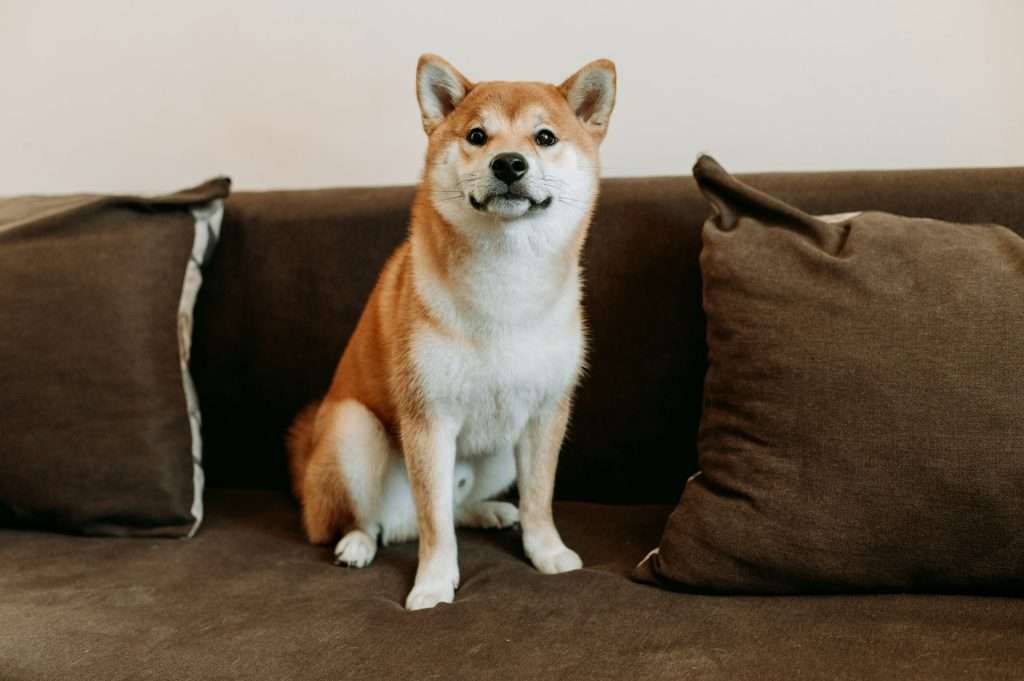
Photo by Wendy Wei
Avoid swapping your Akita’s existing food with a new grain-free option all at once. Their digestive systems need time to adjust. Changing too quickly can lead to diarrhea, vomiting, or a loss of appetite. How should you go about it?
- Start with Small Portions: Mix 25% of the new grain-free food with 75% of your dog’s old food for the first two days.
- Increase Gradually: Over the next 5 to 7 days, slowly increase the new food amount while reducing the old proportion.
- Observe Behavior: If your Akita seems to handle the changes well, you can increase the transition pace slightly.
This gradual process allows your dog’s digestive system to adapt without stress. For more tips on transitioning diets safely, check out how to switch your dog’s food.
Monitoring for Allergic Reactions
Even with grain-free diets formulated for allergies, watching your Akita closely during the transition is essential. Food responses can vary significantly depending on individual sensitivities. What should you look for?
- Skin and Coat Health: Watch for signs like excessive scratching, redness, or new rashes.
- Energy Levels: A sudden drop in activity or lethargy may indicate the new diet isn’t suiting them.
- Digestive Changes: Loose stools, vomiting, or lack of appetite are signals to slow down the process.
Document any symptoms and consult with your vet if something seems off. Your Akita’s well-being should always be a priority.
You can explore this American Kennel Club article for a detailed guide on the best ways to transition. These strategies ensure the switch is safe and beneficial for your furry friend.
Move to a grain-free diet, and keep your Akita happy and healthy!
Consulting with a Veterinarian
Professional guidance is indispensable when managing your Akita’s allergies. A veterinarian can help you pinpoint triggers, recommend practical solutions, and safeguard your dog’s health. Understanding when and how to involve a vet can make all the difference.
When to Seek Professional Guidance
Not all symptoms are straightforward; some may overlap between allergies and other health issues. You should consult a veterinarian if:
- Your Akita frequently scratches, licks, or bites at their skin.
- There are recurring ear infections or hotspots.
- Digestive problems like vomiting or diarrhea persist after meals.
- Over-the-counter solutions aren’t offering relief.
Quick action can prevent mild symptoms from escalating into more serious health problems. A vet’s expertise ensures you’re not simply guessing but addressing the core issues effectively. Check out this guide about dog allergies and symptoms to identify health triggers.
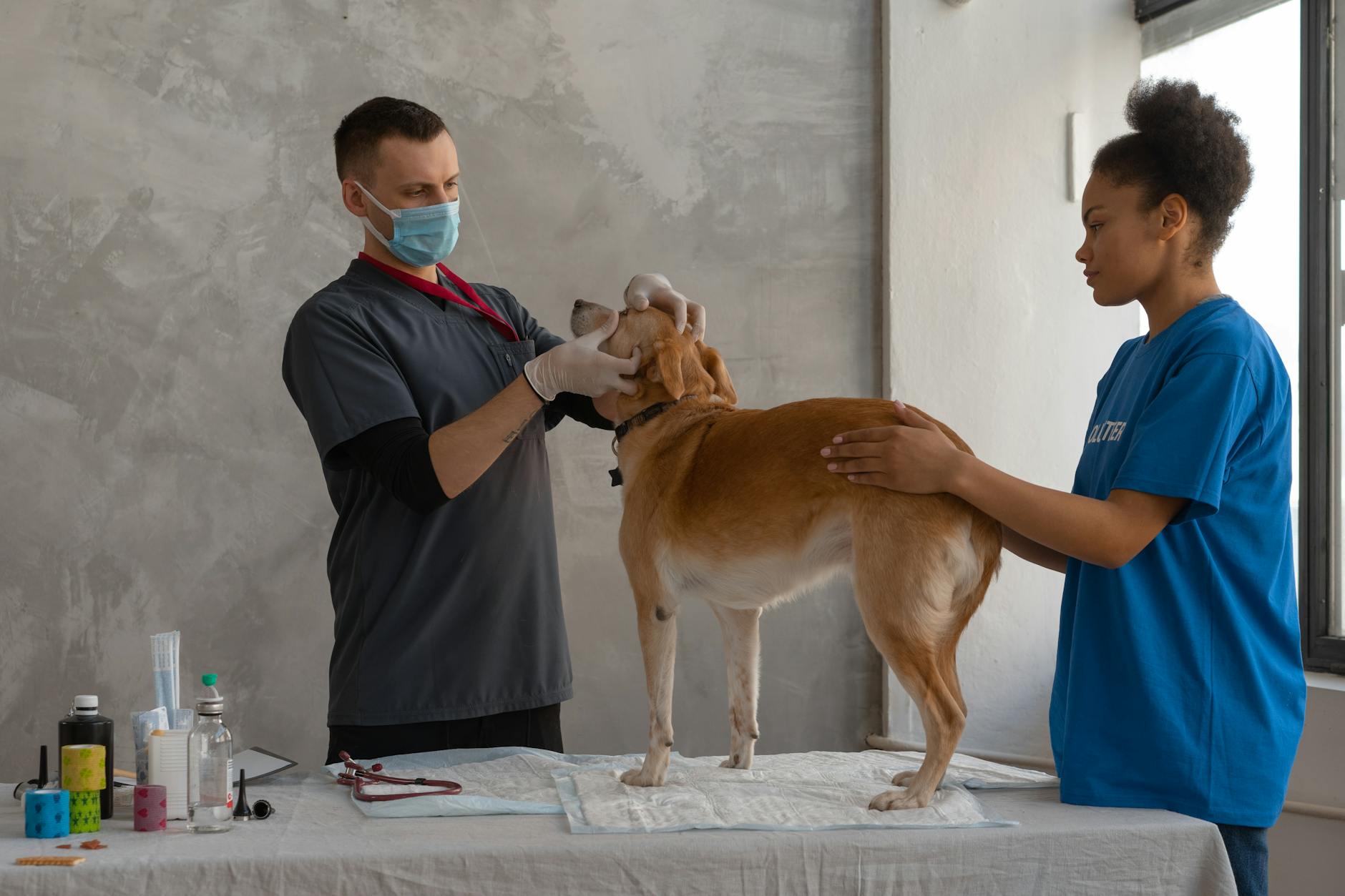
Photo by Mikhail Nilov
Identifying Food Allergies Through Testing
Food allergies can persist even with your best efforts to change diets. Testing can help unveil the hidden allergens causing issues. Common methods include:
- Elimination Diet: Your vet may recommend phasing out suspected foods and reintroducing them to identify triggers.
- Blood Tests: Though not always definitive, these tests can highlight problematic ingredients.
- Skin Patch Tests: A small area is exposed to potential allergens to observe reactions.
Accurately diagnosing food allergies ensures your Akita gets a diet tailored to their needs. For assistance in understanding food allergies, you can explore resources like this detailed breakdown on food allergy testing for pets.
Working closely with your vet is the first step to improving your dog’s quality of life. Addressing allergies requires patience, but the results are worth it. By taking a proactive approach, you’re ensuring your Akita thrives.
For further guidance on feeding practices and monitoring your dog’s health, look at this expert article on senior dog food selection.
Conclusion
Choosing the right grain-free dog food can significantly improve your Akita’s well-being when allergies are a concern. With options like Orijen, Taste of the Wild, and Canidae Pure, there are quality solutions to meet your dog’s unique needs. These foods eliminate common allergens and support a healthier, happier life for your furry friend.
Consult a veterinarian to identify specific allergens and ensure dietary changes are beneficial. Explore more tailored food choices on our guide to dog food for sensitive stomachs to further support your Akita’s health journey. Taking proactive steps today can set your pup up for long-term comfort and vitality.
What adjustments have you tried to manage your dog’s allergies? We’d love to hear about your experience. Please share your thoughts below!
FAQs About Grain-Free Dog Food for Akitas With Allergies
What are the benefits of grain-free dog food for Akitas with allergies?
Grain-free food can reduce allergic reactions if your Akita is sensitive to grains. It often includes alternative carbs like sweet potatoes or peas.
Are all Akitas prone to grain allergies?
Not all Akitas have grain allergies, but they can be more prone to sensitivities. It’s essential to consult your vet for signs like skin irritation or digestive issues.
How do I know if my Akita has a grain allergy?
Common signs include itching, skin redness, ear infections, or diarrhea. A vet can confirm allergies through testing.
What proteins are best for Akitas with grain and other food sensitivities?
Single-protein recipes like lamb, salmon, or duck are great for identifying and managing additional sensitivities.
Is grain-free food the healthiest choice for Akitas without allergies?
Not necessarily. If your dog isn’t allergic to grains, a balanced diet with grains can still be healthy. Learn more about choosing the right dog food for Akitas.
Are certain grain substitutes better for Akitas?
Carbohydrates like sweet potatoes, lentils, or chickpeas are common alternatives. They provide energy without triggering grain allergies.
Can grain-free diets lead to any health risks?
Grain-free foods have been linked to heart issues in some breeds. Please consult your vet to ensure it’s the right choice for your Akita.
Should I try a limited-ingredient diet for my allergic Akita?
Yes, limited-ingredient diets can help identify triggers by reducing potential allergens in their food.
How often should I rotate proteins in a grain-free diet?
Rotate proteins every few months to prevent new sensitivities and provide a variety of nutrients.
Are there affordable grain-free options available?
Yes, brands like Taste of the Wild offer budget-friendly grain-free recipes. Read more about suitable options for dogs.
Can grain-free wet food be a better option for Akitas with allergies?
Wet food can be easier to digest and may benefit Akitas with specific allergies or dental issues.
What treats are safe for grain-sensitive Akitas?
Choose grain-free treats with single protein and minimal ingredients, like freeze-dried meat snacks or grain-free biscuits.
How long before I notice allergy improvements with grain-free food?
Switching diets can take 6-8 weeks for symptoms to improve. Monitor closely and contact your vet for updates.
Are homemade diets good for Akitas with grain allergies?
Homemade diets can be helpful but require precise nutrient balancing. Consult a vet or pet nutritionist for guidance on preparation.
For more specific advice, check our Akita dietary guide.

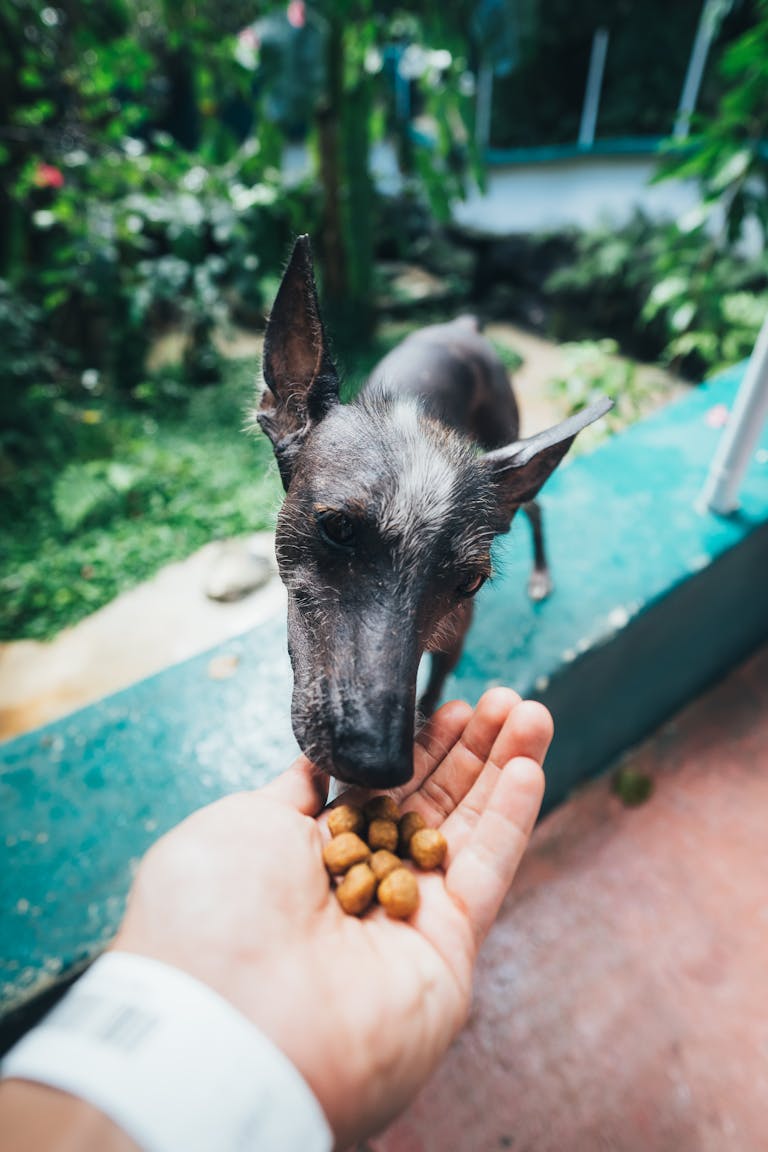
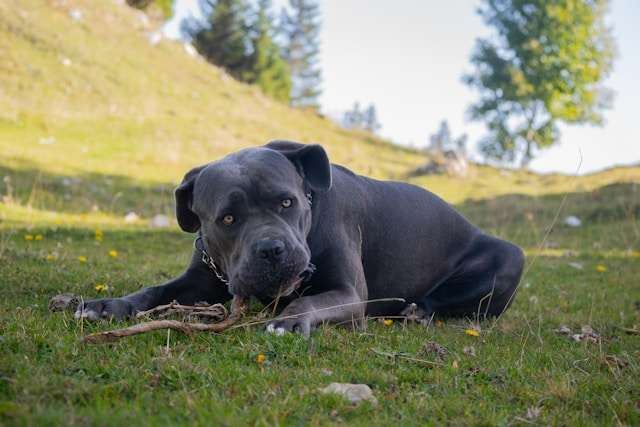
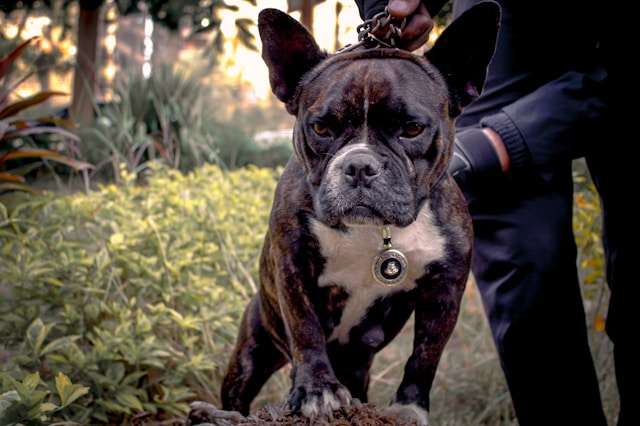

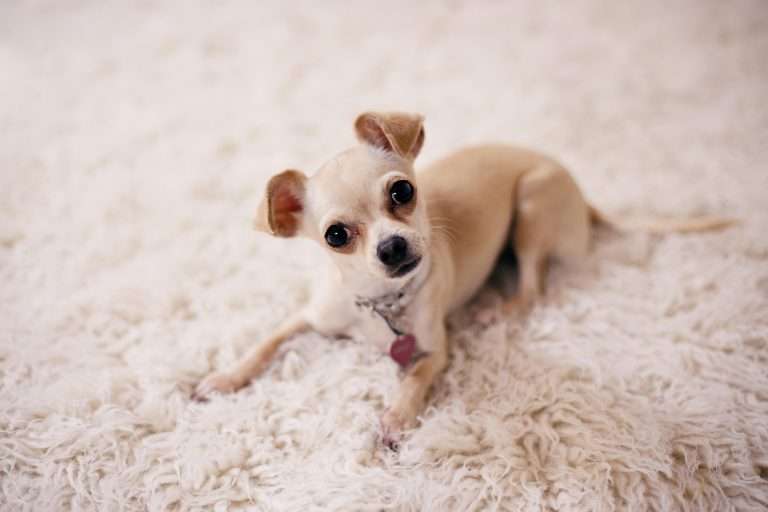

Your point of view caught my eye and was very interesting. Thanks. I have a question for you.